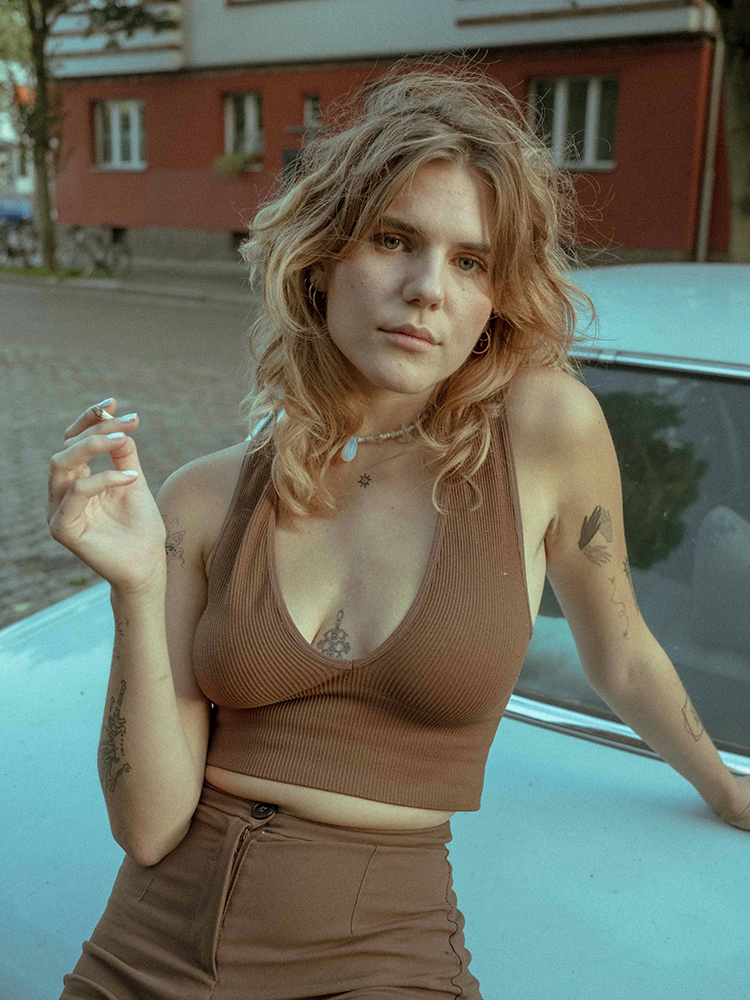
In conversation with
Evelyn Kutschera
Schaffhausen, Switzerland
Hi Evelyn, please introduce yourself.
I live in Schaffhausen (Switzerland), I work as a freelance photographer and “on location”, I don’t have a studio. For my personal projects, however, I travel around a lot. My long-term project about the skinhead scene is supposed to show the subculture worldwide. I have already travelled to the USA and Mexico for it.
In my family, cameras have somehow always been part of everyday life, although no one in my family took professional photographs. But important events, holidays or even Sunday walks were always captured. So I had contact with cameras from an early age. But my passion for it only started when I did an internship at an advertising agency. There I discovered that I wanted to be a professional photographer, but I didn’t want to do a traditional apprenticeship, so I did the preliminary design course and then I went to Cheltenham Spa in England to do my bachelor’s degree at the University of Gloucestershire.
What does analog photography mean to you? What excites / fascinates you about it?
Apart from the nostalgic aspect, it’s mainly the process of how the image is created. The approach in analogue photography is much more deliberate and slower, I have a limited number of shots and I have to use them wisely, otherwise it gets expensive. Haha. Also, an analogue photo has more character in my opinion. Like a vinyl record compared to a CD. It has a soul, somehow. Analogue photography can also be imperfect, whereas with digital work I always strive for perfection.
In your opinion, what are the advantages and disadvantages of analogue photography?
So disadvantages are many – especially the cost point is a big one. It’s damn expensive to shoot analogue. Another point is that you only see after the shoot if something has gone wrong. The biggest advantage is certainly that you’re not faced with several thousand photos during post-production and image selection, because you’ve already thought about how many times you should shoot.
Do you concentrate on a certain topic in your work?
I prefer to photograph people, both in posed scenarios and as snapshots. Especially young people and youth cultures interest me a lot. This passion for music, the alternative lifestyle and the close-knit cohesion. I also find concert photography fascinating. You are very limited in time (three songs), you have challenging lighting conditions and often you are stuck in a narrow trench with about six other photographers and at least three security guards. Everyone tries to get the best picture, but you still have to look out for each other.
Are there (analogue) photographers who have influenced your aesthetic and approach?
Definitely my friend and mentor Gavin Watson, with his photographs of the skinheads in the 70s. The portraits of Michal Chelbin, but also a lot of photographers on Instagram. I follow a lot of unknown photographers and it constantly gives me new inspiration and motivation to develop further.
Do you have certain cameras and films that you prefer to work with?
I prefer working with my Hasselblad and my Nikon F801. I love to try different films, but since film photography is expensive, for 35mm I mainly use Kodak Gold 200 and Kentmere 400, as they are relatively inexpensive. For my medium format camera, I actually always use Kodak Portra. But sometimes I also buy Cinestill film.
Speaking of films: What does your workflow look like?
I have my films developed in the lab and then scan them myself. If I’m abroad, where it’s cheaper than in Switzerland, I have them scanned. For me, a little digital post-processing is part of it. Colour correction and the highlights and shadows are optimised.
What advice would you have for other photographers who are reading this interview?
Always stay tuned, be inspired by all kinds of media. Support and motivate other photographers – we are all in the same boat. And in the words of Gavin Watson: “Time has creative power” – in other words, sometimes you have to put the new work away because it takes time to realise its true potential.
If you publish your work on Instagram: curse or blessing?
Both. I find Instagram a great medium to connect with people and present your work in a quick and easy way. However, the platform reduces the quality of the photos and the algorithms also leave a lot to be desired.
Which 3 photo books can you recommend / should you definitely own?
„Where Children Sleep“ (James Mollison), „Real Life Dramas“ (Mary Frye) and „Inside North Korea“ (Oliver Wainwright).
Thank you so much for your time!
Favorites
Hasselblad 503cx , Nikon F801, Olympus mju2
Kodak Portra 400, Ilford HP5 400
Color & B/W






